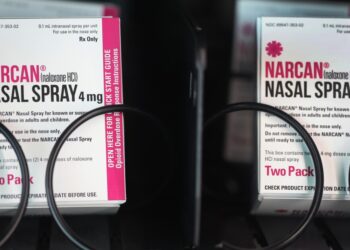Jessica Layman estimates she has called more than 150 doctors in the past few years in her search for someone to prescribe opioids for her chronic pain.
“A lot of them are straight-up insulting,” said the 40-year-old, who lives in Dallas. “They say things like ‘We don’t treat drug addicts.’”
Layman has tried a host of non-opioid treatments to help with the intense daily pain caused by double scoliosis, a collapsed spinal disc, and facet joint arthritis. But she said nothing worked as well as methadone, an opioid she has taken since 2013.
The latest phone calls came late last year, after her previous doctor shuttered his pain medicine practice, she said. She hopes her current doctor won’t do the same. “If something should happen to him, there’s nowhere for me to go,” she said.
Layman is one of the millions in the U.S. living with chronic pain. Many have struggled to get opioid prescriptions written and filled since 2016 guidelines from the Centers for Disease Control and Prevention inspired laws cracking down on doctor and pharmacy practices. The CDC recently updated those recommendations to try to ease their impact, but doctors, patients, researchers, and advocates say the damage is done.
“We had a massive opioid problem that needed to be rectified,” said Antonio Ciaccia, president of 3 Axis Advisors, a consulting firm that analyzes prescription drug pricing. “But the federal crackdowns and guidelines have created collateral damage: patients left high and dry.”
Born of an effort to fight the nation’s overdose crisis, the guidance led to legal restrictions on doctors’ ability to prescribe painkillers. The recommendations left many patients grappling with the mental and physical health consequences of rapid dose tapering or abruptly stopping medication they’d been taking for years, which carries risks of withdrawal, depression, anxiety, and even suicide.
In November, the agency released new guidelines, encouraging physicians to…
Read the full article here







